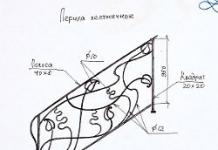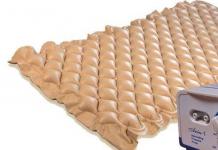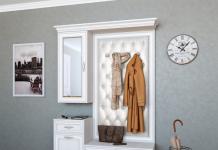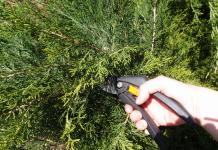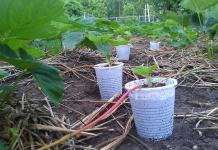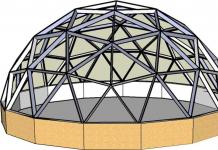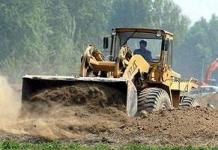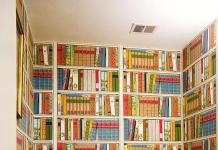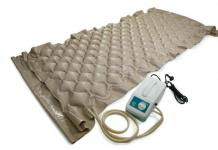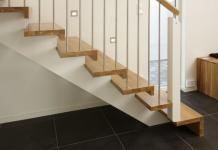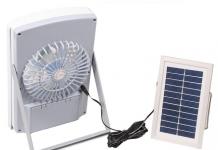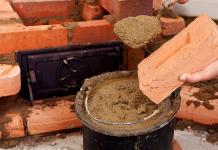The content of the article:
Insulation under the wallpaper is a special substrate designed to keep the heat in the room, leveling the walls, their heat and sound insulation, as well as protection against mold, fungus and condensation. The installation of such material largely solves the problem of durability of the finishing coating of structures. We will tell you about how to glue the insulation under the wallpaper on the walls in this article.
Features of thermal insulation of walls using a substrate for wallpaper
One of the types of wall insulation before wallpapering is roll insulation. It is performed using substrates with a thickness of about 8 mm, made on various bases:
- Styrofoam backing. This material is produced in the form of rolls. To fix it on the surface of the walls, glue or a mixture containing gypsum fine-grained plaster is used. Wallpaper sticker on such a substrate is made using a special polymer cement adhesive. The best adhesion with wallpaper is polystyrene foam insulation with an outer layer made of cardboard. Wall insulation with this material is quite effective, since it is reliable, absorbs noise and vibration well, is resistant to moisture and mold, but its thermal insulation properties are somewhat lower than those of polyethylene substrates, which will be discussed later. The Thermo-Tap insulation has good reviews. The size of its roll is 10x0.5 m, the price of 1 m 2 of material starts from 500 rubles.
- PE foam backing. The foam material consists of soldered cells filled with air and enclosed between layers of paper. Therefore, any special composition for attaching the substrate to the base is not required. Wallpaper glue is quite suitable for performing the whole complex of works. Such a substrate has excellent adhesion to any kind of surface. Today, this rolled material is the most popular option as a thin thermal insulation for walls. Polyf insulation under wallpaper is generally recognized. It goes on sale in rolls of 0.5x14 m, material thickness - 50 mm, density - 30 kg / m 3, thermal conductivity - 0.039 W / m * K, sound absorption - up to 22 dB, price of a Polyfom roll - 1200 rubles.
- Cork backing. It is impeccable in terms of ecology, has excellent thermal insulation properties and absorbs sound well. Its presentable appearance eliminates the need for external wallpapering. However, the moisture resistance of such insulation leaves much to be desired, so the cork substrate is often impregnated with moisture-repellent compounds - wax, for example. For the convenience of fixing on the walls, the back side of the cork backing is impregnated with glue. The material is sold in rolls from 5 m 2, the price of 1 m 2 is 400 rubles. and more.
- Substrate combined with wallpaper. This material is a wallpaper, on the back of which insulation is glued. For the production of such products, aluminum foil, synthetic fiber and the wallpaper itself are used. The installation costs of this insulation are minimal, but the material does not differ in variety.
Insulation under the wallpaper can hide only minor flaws in the walls. If before its installation it is not possible to level the surface, it would be better to use cork thermal insulation. It is able to hide almost all flaws, but special glue is required to attach the cork material.
Advantages and disadvantages of insulation under wallpaper

Installing insulation for walls under wallpaper has a number of undoubted advantages. Let's name the main ones:
- Insulation holds heat well in rooms adjacent to unheated enclosed spaces, such as a stairwell.
- After the installation of such a coating, the sound insulation of the room increases, the noise behind the walls becomes inaudible.
- Insulation with a substrate under the wallpaper is an environmentally friendly insulation, since the material is designed specifically for work inside rooms and does not have extraneous odors and toxic emissions.
- If the surface of the walls has small flaws in the form of bumps, spots, chips, they can always be hidden under a soft and elastic wallpaper insulation. Its paper shell is guaranteed to protect the finish from stains, retain its color and pattern.
- The insulation is easily fixed on the surface with conventional glue for heavy wallpaper and actively resists the formation of condensate. The material is easy to cut, lightweight and has good adhesion to many surfaces.
- Due to the simple installation, the rolled insulation under the wallpaper can be glued on its own, without involving unauthorized persons or specialists.
When choosing a roll insulation for wallpaper, one should take into account its technical properties, cost and the possibility of self-assembly.
Wall insulation technology for wallpaper
The process of installing a heat-insulating substrate is practically no different from the usual wallpapering of walls. The difference can only be in the composition of the adhesive. The work is carried out in stages and consists of preparing the surface and materials, priming the walls and sticking thermal insulation on them.
Preparation of the base for mounting the substrate

Before gluing roll insulation under the wallpaper, it is necessary to remove the old finish, peeling plaster, dirt, protruding nails, fittings and other unnecessary details from the walls. After cleaning, the identified cracks and potholes should be repaired with cement mortar, and the influx of mortar or concrete should be knocked down with a chisel.
Due to the fact that the insulating substrate under the wallpaper smoothes out minor flaws in the surface, it is not required to level it to an ideal state. But if the walls have differences of more than 5 mm, it is necessary to apply a thin layer of plaster on them.
After cleaning and leveling the surface, they should be primed. This stage of work is of particular importance: in addition to the fact that the primer layer exhibits antiseptic properties, it also increases the adhesion between the wall and the thermal insulation substrate.
The work should be done with a roller or a paint brush, all further actions are performed only after the applied primer has dried. The drying time is indicated on the packaging of the material.
Preparation of materials for wall insulation for wallpaper

This stage of work consists in cutting the insulation under the wallpaper into canvases of the desired size and stirring the adhesive composition. When choosing glue, you should focus on the type of insulation substrate and its weight. The best option would be to purchase an adhesive mixture with the addition of fine-grained gypsum putty or glue for heavy wallpaper.
To cut the insulation you will need a tape measure, a knife and a ruler. You should first measure the desired height on the wall, and then roll out the roll of thermal insulation and cut it into sheets of the appropriate length.
The required number of rolls for room insulation is calculated simply: you need to take the quotient of dividing the area of \u200b\u200bthe walls of the room by the value of the area of \u200b\u200bone rolled out roll of insulation. It is recommended to buy the material with a small margin of 5-10% in case it is trimmed at the junction of structures.
Before working with glue for insulation under wallpaper, you must study the instructions attached to it, in which the manufacturer indicates the method of applying the composition, its drying time and scope. It is recommended to use only a substance that is designed to work with a particular type of thermal insulation substrate. Before applying to the surface, the adhesive composition must be thoroughly mixed.
Instructions for installing the substrate under the wallpaper

When installing the insulation on the walls, the temperature of the air and the surface should not be lower than + 10 ° C, the humidity of the environment should not exceed 70%. Before work, close the windows and doors of the room to avoid drafts, they are completely unacceptable.
The adhesive is applied with a roller and brush. It is necessary to evenly treat the base and the back side of the thermal insulation sheet with the composition, which, after holding for 5 minutes, should be carefully applied to the wall in the right place according to the previously applied markings.
Installation of insulation sheets must be carried out vertically from top to bottom without gaps butt-to-butt. To remove air from under the glued thermal insulation, the substrate must be rolled with a roller from the middle to the edges of the sheet. After securely fixing the canvases on the wall, their joints must be glued with masking tape.
A day after the completion of thermal insulation, the room can be ventilated. Wallpaper sticker on the insulation should be done only after it has completely dried, the time of which is 2-5 days.
Before pasting the walls with a finishing material, you should check the strength of the fixation of the heat-insulating layer. To do this, its small section measuring 5x5 cm can be cut at the bottom of the wall.
How to glue the substrate under the wallpaper - look at the video:
If the technology of gluing insulation under the wallpaper is followed, up to 20% of thermal energy can be saved. Rolled heat insulator is much more effective than wall carpets. In addition, under the window sills of the apartment, warm wallpaper will save you from cold bridges for a long time and keep the comfort of your home.


When you make repairs, you want the result to be durable, and not just beautiful. You should also take into account the technical characteristics of your premises, so that later it does not turn out that your brand new and beautiful design is simply useless, and the apartment is cold and damp. Pre-insulation of the walls will help to solve this problem.
The main types of wall insulation
At first glance, it may seem that it is impossible to do insulation work with your own hands, but we hasten to assure you that this is not so. The main thing is to choose the right insulation for wallpaper and follow the technical recommendations, which are numerous on the Internet and on the pages of specialized publications.
When choosing internal thermal insulation, it is important to do this without compromising the size of the room. That is, without the use of complex structures and tile or fibrous materials. How to choose the best material for insulation, which will help reduce heat loss and will not be harmful to health. There are many options on the market today.
Types of insulation for wallpaper
If we try to classify the types of wall insulation, we will get two main groups:
- Thermal insulation plaster.
- Roll insulation Polif.

One of the best types of insulation
Drywall is often used for internal insulation, it retains heat well and helps to level the walls. But for its installation, a special frame is required, and wall insulation with the help of this material, as many reviews say, significantly eats up the space of the room. Therefore, in this article we will focus on the first two types of wall insulation and consider the characteristics of each of them in more detail.
Features of insulation for wallpaper
It would seem, what could be easier than choosing materials for insulation? You come to the store, take the product that is most suitable for the price, and then let the masters deal with its application.
Related article: Vertical curtains in the apartment: photo selection
After all, not everyone can properly plaster walls, and therefore most resort to the help of specialists. But before you put the materials in the hands of the pros and entrust them with repair work, think about what kind of end result you expect. Compare your desires with the assortment offered in the store and try to make a deliberate and balanced choice, because you do not make insulation for a year or two. And his alteration can cost you a pretty penny.
On the modern construction market, there are several types of heat-insulating plaster, which differ in the composition of the filler:
- Wood sawdust is the cheapest filler option. Such plaster has a low moisture resistance index, therefore, if you decide to insulate a balcony or cottage, choose a different type of thermal insulation material.
- Expanded polystyrene is an excellent insulation with high heat and noise insulation. True, there are some pitfalls: this material is highly flammable, and during combustion it releases toxic substances.
- Perlite or vermiculite. Such mineral fillers are almost ideal, as they have high fire resistance, are resistant to chemical and biological factors, and are environmentally friendly. But, like everywhere else, there are some but, plaster with such fillers requires mandatory vapor barrier, as it quickly absorbs moisture.
- Foam glass is a non-combustible, waterproof, environmentally friendly material that does not contain toxins, but has a lower thermal insulation than that of expanded polystyrene.

Heat-insulating plaster
Please note that mineral plasters create a rough surface, on which a layer of finishing mixture should be applied before wallpapering.
Varieties and properties of roll insulation
A distant relative of modern roll insulation are old newspapers, which were pasted over the wall in several layers before wallpapering.
But times have changed, and on the modern market there are more effective options for heaters, made on a different basis:
- The Styrofoam substrate has exactly the same characteristics as the aforementioned Styrofoam-filled plaster. Sold in rolls, glue it on a special glue or glue mixture for heavy wallpaper with the addition of gypsum-based finishing plaster.
Although the manufacturers of this material shout that the wallpaper is glued to it just perfectly, practice shows that this is not the case. To facilitate the gluing process, you can use polymer cement glue and fiberglass mesh, but it is best to foresee such troubles and buy insulation with a top layer of cardboard. - Expanded polyethylene foam (Polyfoam) is a fairly popular material for the substrate. Its structure is cells with air bubbles, which are pasted over with layers of paper on both sides. This makes it extremely easy to stick such a roll insulation to the wall and stick wallpaper on it.
- Cork underlay. This version of the insulation is not only environmentally friendly and has excellent heat and noise insulation properties, but is also quite attractive in appearance. In some cases, cork backing is used as an option for wall finishing. Although this material itself is unstable to moisture, there are special types of cork impregnated with a moisture-repellent wax composition.
- Wall-paper with a heater for walls. This is a finished product made from fiber, aluminum foil, spunbond and oilcloth wallpaper. Such wallpapers are convenient if the room does not require strong thermal insulation. They save a lot of repair time, however, finding them with a suitable design is quite difficult.
Do-it-yourself insulation for wallpapering
Insulation for walls inside the apartment under the wallpaper helps to increase the comfort of the temperature regime in winter or summer, which makes it possible to optimize the cost of heating and air conditioning. Thermal resistance works in both directions and such a type of repair in an already lived-in room, such as wall insulation from the inside, allows you to get the desired result in a short time. Specially designed materials can perform heat-insulating work with virtually no loss of usable area of the room.
In an operated building with a design thickness of structures, additional thermal insulation of the outer wall in the apartment can be laid under the wallpaper without major capital work.
Materials can be used as a reliable heat insulator, and in combination they have several functions, which are distributed as follows:
- energy saving;
- soundproof;
- an obstacle to the formation of moisture condensate on the surface of the finish and, accordingly, the appearance of mold;
- leveling (foam layer elastically fits irregularities and hides minor differences);
- repeated use (the guarantee for some types of such heaters is set up to 50 years).
 Practical and reliable insulation under the wallpaper
Practical and reliable insulation under the wallpaper
An example of a material that combines the listed functions in its characteristics is a polyfoam with a heat-reflecting layer (photo):
With all the ease of installation made on the adhesive composition, such wall insulation also has an acceptable price in comparison with the economic effect obtained during the period of its operation.
Types of insulation
Depending on the size of the room and the degree of heat loss in winter, several types of heat insulators can be used to insulate the walls of the house from the inside, differing in the installation method and layer thickness. They are subdivided as follows:
- Warm plaster. Dry building composition in the form of a plaster mixture with special fillers (perlite, vermiculite, foam glass, sawdust, fibers). Plastering works require a lot of time and significant labor costs. The solution is applied in a layer up to 5 cm thick and will require a leveling procedure with a plaster or acrylic putty. It is quite suitable for warming new still unplastered walls. The disadvantages of warm plaster include a high ability to absorb water. This means that she herself needs reliable protection from water vapor.
- Plate materials. Insulation sheets are produced mainly from foamed polystyrene. Based on the cost of such materials, most often foam is used for work inside the room. The thickness of the sheet varies from 2 to 10 cm, but usually no more than 5 cm is chosen. To obtain a full-fledged wall, it is laid in a wooden frame and sheathed with drywall. If a more economical method of gluing is chosen, then such a surface should, if possible, be protected from mechanical influences. To this end, it is covered with a layer of plaster or furniture can be arranged in such a way as to limit the possibility of access (especially children) to the wall. Hanging heavy decor items, paintings on polystyrene is also not worth it. You can remove the old finish coating from the foam surface only by damaging the smooth plane of the plate, so you will have to change the insulation itself. Another disadvantage of direct wallpapering of polystyrene foam boards is the fire hazard of this material.
- Roll heaters. They're called wallpaper pads. Due to the small thickness (up to 2 cm), the foamed polymers do not undergo permanent deformation during compression, but transfer the entire mechanical load to the load-bearing wall. In extreme cases, the damaged fragment should simply be cut out and a new piece glued on.
- Cork. Natural material, which, depending on the thickness, is available in the form of rolled sheets or individual plates. If the budget of the ongoing repairs allows, then there are no questions for such a house insulation under the wallpaper. The technical characteristics of this material are acceptable in all respects in any living room.
- Warm wallpaper. In this case, the heat-insulating layer is already applied to the web of the finishing material. The multilayer structure includes oilcloth, foil, spunbond (covering material). The difficulty will lie not so much in the weight of the sheet, which must be carefully glued into place, but also in the ability to satisfy your aesthetic needs with the proposed range of patterns and colors. Any type of wallpaper you like can be glued to the rolled insulating material separately mounted under the wallpaper.
 Installation of plates on glue
Installation of plates on glue
The photo shows how to glue the insulation under the wallpaper, if you have to work with foam:
The most thin, durable, non-combustible heat-insulating materials for wall mounting are produced in a practical roll version. They can be covered on 2 sides with paper or have a foil layer to reflect infrared radiation. The paper adheres more firmly to the adhesive, and the foil gives an additional reinforcing effect.
Varieties of thin insulation
It is necessary to select a roll insulation for walls for wallpaper for your apartment, based on the technical characteristics of the material and the price rationality (sufficiency) of the selected option.
For example, considering the physical and mechanical indicators that penofol has, it can be seen that the lower the ability to absorb water, the higher the requirements for moisture content in the material of the walls of the house - when pasting, sufficient adhesion may not occur (moisture has nowhere to be absorbed). The resistance to delamination of the material is also not standardized for all grades (see table):

Ignorance of these nuances can lead to a decrease in the quality of installation work or unnecessary damage to expensive insulation.
As a polymer heat insulator, manufacturers use 2 main materials:
- expanded polystyrene;
- polyethylene foam.
The expanded polystyrene substrate under the wallpaper retains all the advantages known from the use of this material as a filler in plasters or slab versions. Glue the sheets to the wall using a high quality adhesive with high adhesion for dense materials. These properties are enhanced by adding finishing gypsum putty to the adhesive composition.
The foam polystyrene substrate can be in 1 layer or glued on one side with a sheet of paper for better adhesion to the base of the wallpaper.
Foamed polyethylene foam as a substrate surpasses expanded polystyrene in many technical characteristics, therefore today it is the most popular type of insulation for wallpapering.
 Easy-to-install ecohit
Easy-to-install ecohit
A sample of a rolled version of polyethylene foam - ecohit insulation is shown in the photo:
The foam base is covered with paper on 2 sides, which allows you to confidently stick it to the wall and hold on to both light paper sheets and heavy vinyl wallpaper for painting.
polyph
One of the easiest insulating materials to install is polyfoam, made in roll form from foamed polyethylene foam.
On one side, facing the outer wall, no additional coating was applied to the polyfoam. The front side of the material is covered with strong paper with high density.
Such a surface makes it possible to glue any wallpaper by weight to the insulation already on a vertical base.
The heat insulator with a density of 30 kg/m³ is produced in standard rolls with the following dimensions:
- length 14 m;
- width 0.5m;
- thickness 0.5 cm.
The coefficient of thermal conductivity of the polyform is 0.03 W / mk (12 cm brickwork, 5 cm wood). It can be successfully installed under siding and other cladding.
The joints of the canvases to obtain a solid plane are sealed with adhesive tape.
Full information on how to insulate walls inside a house using a polyfoam is shown in this video:
Polyfoam is a soundproofing component in the construction of walls. Its noise reduction index is about 30 dB, equally successfully coping with shock vibrations and sounds coming through the air.
Cork
Cork insulation is the only completely natural insulation that can be used for direct wallpapering.
Cork specifications:
- thermal conductivity coefficient 0.04 W/mk;
- density 100 - 130 kg/m³;
- flammability class G3 (fast-extinguishing);
- weight - 200 kg / m³.
 Rolls of different thicknesses
Rolls of different thicknesses
For the insulating layer of the substrate on the wall under the wallpaper, as a rule, cork sheets with a thickness of 10 mm are taken.
A view of cork products for mounting on walls is shown in the photo:
The main advantage of a natural cork substrate over synthetic polymers is that it does not emit toxic substances when exposed to an open flame or high temperatures.
The unique feature of the material lies in the honeycomb structure. Due to the fact that each cm³ of wood contains up to 40,000,000 cells filled with a gaseous mixture, cork materials demonstrate excellent thermal insulation characteristics, do not allow moisture and gaseous volatile substances to pass through.
Related articles:
Insulation for wallpaper for walls is a fairly new material, and most developers are almost unfamiliar with it. But I can tell you with all responsibility that this material will allow even an inexperienced person to qualitatively insulate the base for wallpaper with minimal time and effort. I will analyze the workflow in great detail, and you will just have to repeat all the steps in order to achieve a result that will be no worse than that of professionals.
In the photo: it is this option that we will consider in our review.
Description of the workflow
To begin with, I will tell you about the Polyfom insulation - the material is a foamed polyethylene with a closed cell structure, which does not allow moisture to pass through and has good thermal insulation properties.
The thickness of the material is 5 mm, the outer sides are covered with special paper, so that after finishing the work you get a completely finished base for wallpapering.
This structure makes this material an ideal base for wallpaper.
The walls in the apartment, especially when it comes to panel houses, do not have high thermal insulation performance, so an additional layer of insulation is a prerequisite for a quality repair. In addition, Polyfom has good soundproofing characteristics, which is also important. Let's figure out how to properly organize the workflow.
Step 1 - preliminaries
Do-it-yourself wall preparation work begins long before the insulation is glued to the surface. Moreover, the preliminary work will take much more time and effort than the main stage, but without them it will hardly be possible to achieve an excellent result. Therefore, I recommend that you follow all the tips as carefully as possible so that each stage of the process is done in the best possible way.
First of all, you need to prepare all the required materials, their list is as follows:
| polyph | Naturally, one cannot do without this material, it is usually sold in rolls 50 cm wide and 14 meters long, but there may be other parameters, the price per square meter is about 180-200 rubles. It must be purchased with a margin, since during the work, waste will inevitably be generated that cannot be used. Based on experience, I can say that a margin of 10% is quite enough if you do not have non-standard walls |
| Adhesive composition | To glue Polif, we need glue, you should not look for some specialized option, the usual composition for heavy wallpaper is enough. Its quantity depends on the area to be glued and is calculated individually in each case. |
| Primer | The surface of the walls must be primed without fail, otherwise it will take twice as much glue to work, and in the end it turns out that in some places the material has come off due to poor adhesion. Most often, deep penetration formulations are used, which are sold both in finished form and in the form of concentrates, which simplifies their transportation. |
| putty | The composition is necessary for preparing the walls, for all the time I have only met a perfectly even base, but it was also specially prepared before the previous wall gluing. The amount of putty depends on the degree of unevenness, so it is unlikely that it will be possible to accurately determine the amount. |
Universal adhesive compositions are also suitable for Polyfom
Now let's figure out which tool is useful for doing the work, everything is also quite simple here:
- For measurements, it is best to use a tape measure, and to control the plane, the building level will be ideal. For marking, it is good to have a construction pencil on hand, pens and other items are not very well suited for this process;
- Material is cut with a wallpaper or construction knife. It can be purchased at any hardware store, you also need to stock up on additional blades, since when used they tend to lose their sharpness or break;
- For putty, you need a container in which the composition will be mixed, as well as a wide and narrow spatula, with their help, the mixture will be distributed over the surface and leveled. It is best to mix the putty with a drill or a puncher with a special nozzle called a mixer;
Some people find it more convenient to work with a trowel, but for inexperienced developers, a spatula is still better.
- The primer is most often applied with a brush-brush or a roller with a long nap. It all depends on the area of application, if there is a lot of work, then it is better to purchase a roller. Do not forget to equip it with a special telescopic extension handle so that you can process the entire wall from bottom to top standing on the floor, this will save you from having to carry chairs or a table;
Telescopic paint extension significantly simplifies the workflow
- The smoothing of the canvases is carried out using a special spatula, which allows you to quickly expel air bubbles and press the material to the surface. There are different configurations of the tool, when choosing, pay attention to the working part, it must be quite flexible so that it does not damage the coating when smoothing.
The spatula allows you to smooth the material much faster
Now let's figure out what needs to be done in preparation for work:
- First of all, you need to measure all the walls in order to calculate the surface area. This will allow you to accurately calculate the required amount of thermal insulation material and adhesive composition for it. Everything is simple here: the height and width are measured and the area of \u200b\u200bthe openings that are in the room is taken away;
Record all measurement results, memory can fail with a large number of numbers
- Then you need to check the plane with a level, it is important to figure out how flat the surface is and how much putty work is to be done. Sometimes the condition of the walls is so deplorable that they have to be re-plastered, but we will not consider this option, since this is the topic of a separate review;
- Before starting work, you need to free up space, if there is nowhere to take out furniture and other items, then move them to the middle and cover with special polyethylene to avoid dust settling. It is best to work on a wide table, but, in extreme cases, you can also do it on the floor, then you need to thoroughly wash a separate area of \u200b\u200bthe required size.
Step 2 - surface preparation
Wall insulation from the inside, followed by wallpapering, begins with preparatory measures aimed at leveling and strengthening the plane. The work instructions are as follows:
General scheme of the workflow for the preparation of walls
- First of all, you need to remove the old wallpaper or other coatings that were on the wall.. If there are areas on the plane where the plaster does not hold very well or a booming sound is heard when tapping, then the coating should also be removed, it is important that subsequently there is no such situation when individual sections begin to fall off;
- If there are large cracks on the wall, significant irregularities and other similar flaws, then it is easiest to repair them with cement plaster or a self-made cement-sand mortar. Remember that such mixtures dry for a very long time, so this work must be done in advance;
- Next, putty is applied, if the walls are plastered, then the easiest way is to tighten the entire surface, if the base is generally even, then individual sections can be puttied. The work is very simple, the main thing is to carry it out carefully so that it does not turn out that instead of leveling you have made a few more irregularities that will need to be eliminated;
Leveling the surface - the process is not as complicated as it seems at first glance
- After that, it is necessary to level the surface using sandpaper with a grain of P120. For convenience, the abrasive material is attached to a special bar, but, in extreme cases, you can also use a piece of board, to which the sandpaper is attached using ordinary pushpins. The work is quite simple, you need to eliminate all visible flaws and achieve a more or less even plane;
When grinding, a lot of dust is generated, so a respirator will not hurt
- The primer for the walls inside the apartment under the wallpaper should penetrate deeply into the base and clog all small pores in order to reduce glue consumption and improve the adhesion of the composition. It is best to use acrylic-based formulations, read the instructions carefully before applying, as you may have a concentrate, or you may have a composition that is completely ready for use. Its application is carried out in one stage, make sure that there are no uncoated areas on the surface.
The extension cord will help you quickly prime the walls without climbing up the hills.
The soil dries out within a couple of hours, but if the humidity in the room is above average or the temperature is below 15 degrees, then it is better to wait about 6 hours.
Step 3 - gluing insulation
The gluing technology is quite simple, for work you do not need special tools and extensive experience in this field. The workflow looks like this:
- IN first of all, measurements are taken, and the insulation is cut into pieces of the desired length. At the same time, leave small gaps at the top and bottom, this will simplify the workflow, and these places will still be subsequently closed with a plinth. The material has a thickness of 5 mm, so it is not very flexible, it is better that it is located without interference, cutting it while gluing is not the best option;
- Next, glue is prepared, here the usual composition used for walls inside the house under the wallpaper is suitable, the main thing is that it is intended for heavy materials. As an option, I can recommend the use of PVA glue, it also holds the material very well and is especially suitable for rooms with high humidity, its plus is that it is sold ready-made;
Any adhesive for heavy coatings is also suitable for Polyfom
- Applying glue to the surface of the prepared material is carried out using a brush-brush, so you can evenly distribute the composition, in extreme cases, a wide brush is also suitable. Most often, after application, you need to wait for some time, all information is indicated on the package with glue, so carefully study it before gluing;
The composition must be applied to the entire area, there should be no uncovered areas
You can apply the composition immediately on 2-3 canvases, while you do this, the right time will pass, and you will be able to glue several elements in a row at once, this significantly speeds up the workflow.
- Gluing Polyfoma is done quickly and easily, this is due to the fact that the material has a large thickness and therefore does not bulge and does not bend when pressed against the wall. The most important thing is to expel all air bubbles from under the insulation, for this a spatula is used, which needs to be worked in the direction from the middle of the canvas to the sides, the material unfolds gradually as it is glued or is pressed entirely if you are working with an assistant;
The workflow is simple, just stick 1-2 sheets to fill your hand
- It is glued end-to-end with foam, it is important to combine the ends as best as possible, which is very simple due to the large thickness of the material. Cutouts are made at the location of the switches and junction boxes, try not to make them too large;
- Drying of the glue can last from a day to four, it all depends on the composition used and the microclimate in the room. After that, the joints can be glued with masking tape for additional reliability.
After completion of the work, an absolutely even base is obtained.
Wallpaper for walls for insulation can be any, the base is excellent for all types of coatings and can withstand even the highest loads.
Conclusion
Roll insulation for wallpaper is an excellent solution for any house or apartment, it is important to prepare the walls well and glue the material with high quality. The video in this article will tell you additional information on the topic, and if something is not clear to you, then write your questions in the comments below.
If you want to express gratitude, add a clarification or objection, ask the author something - add a comment or say thanks!
Often in panel high-rise buildings, the question of the need to insulate the apartment is acute. This is especially true for corner apartments, in which three of the four walls are in contact with the external environment. Such walls quickly freeze through and create certain troubles in the form of dampness and mold in the apartment. Therefore, sometimes the only correct solution is the internal insulation of the apartment.
- Advantages and disadvantages of internal insulation
- Basic requirements for insulation materials
- Internal wall insulation with foam
- Internal wall insulation with liquid insulation
- Polyfom - a new word in insulation
Advantages and disadvantages of internal insulation
Internal wall insulation has a number of advantages and disadvantages. Let's start with the negative aspects of external insulation:
- A layer of insulation, laid on the inside of the wall, steals space in the room, making it less overall.
- With the transition of temperatures from the outer side of the wall to its inner surface, a so-called “dew point” is created, which, with internal insulation, can be inside the insulation or between the insulation and the wall, which will lead to the accumulation of condensate there and the development of mold colonies.
- The wall insulated inside is not able to accumulate heat, and therefore the level of its heat loss is up to 15%.
- If the basic rules for insulating the inner wall are violated, the entire wall will freeze through, which will eventually cause destructive processes in its thickness.
Of course, internal insulation has a lot of shortcomings, but they are covered by a number of advantages. For example, internal insulation can be done by hand, while external insulation will require the involvement of outside workers, which will entail considerable expenses.
Those. internal insulation will save not only on materials, but also on work.
Basic requirements for insulation materials
Insulation for walls inside the apartment must meet certain safety requirements, on compliance with which the health and well-being of households will depend.
These requirements include:
- environmental friendliness;
- incombustibility;
- minimum coefficient of hygroscopicity and vapor permeability;
- high adhesive properties.
In other words, thermal insulation should not release toxic substances into the environment, should not support combustion, should not absorb moisture and steam, and should also be well retained on the wall surface.
From the foregoing, we can conclude that mineral wool, cork and warm plaster, familiar to everyone, cannot be used as a heat-insulating material for internal insulation. And what materials then to use? Let's talk about this further.
Internal wall insulation with foam
Penoplex is a modern relative of polystyrene, but with better thermal insulation characteristics. Compared to foam plastic, foam plastic has a 1.5 times higher thermal insulation coefficient, which allows it to be used in sheets of smaller thickness.
Penoplex practically does not allow moisture and steam to pass through, and is also non-toxic, i.e. fully meets all the above requirements for internal insulation. In addition, this heater is affordable.
Penoplex sheets are mounted to the wall using special glue, and the seams between the sheets are carefully sealed.
Internal wall insulation with liquid insulation
The modern market of building materials not so long ago introduced a new type of insulation - liquid. In another way, it is called "thermal paint" or insulating paint.
This composition is microparticles suspended in an acrylic base, made of ceramic or polymer. The percentage of microparticles in the paint is up to 80%.
Thermal paint is applied to the wall with a brush, roller or spray gun. To improve the quality of thermal insulation, layer-by-layer painting of the wall is carried out with the drying of each layer.
The resulting coating has a high degree of adhesion, low coefficients of hydro- and vapor permeability.
The main advantage of this type of insulation is the absence of seams, as well as gaps between the insulation and the wall, and the insulation and wallpaper. This eliminates the possibility of the formation of "cold bridges".
Polyfom - a new word in insulation
Polyfoam is a heater made on the basis of polyethylene foam, a material with a system of closed pores, which leads to a high degree of thermal insulation. This insulation is produced in rolls and has a web thickness of only 5 mm with a relative density of 30 kg / m3.
Polyethylene foam is covered on top with a thick layer of paper, which allows pasting even with heavy types of wallpaper over the insulation. However, in the building materials market, polyfoam also occupies the position of insulating substrates for wallpaper.
September 2, 2016Specialization: master in the construction of plasterboard structures, finishing work and laying flooring. Installation of door and window blocks, facade finishing, installation of electrics, plumbing and heating - I can give detailed advice on all types of work.
Insulation for wallpaper for walls is a fairly new material, and most developers are almost unfamiliar with it. But I can tell you with all responsibility that this material will allow even an inexperienced person to qualitatively insulate the base for wallpaper with minimal time and effort. I will analyze the workflow in great detail, and you will just have to repeat all the steps in order to achieve a result that will be no worse than that of professionals.
Description of the workflow
To begin with, I will tell you about the Polyfom insulation - the material is a foamed polyethylene with a closed cell structure, which does not allow moisture to pass through and has good thermal insulation properties.
The thickness of the material is 5 mm, the outer sides are covered with special paper, so that after finishing the work you get a completely finished base for wallpapering.

The walls in the apartment, especially when it comes to panel houses, do not have high thermal insulation performance, so an additional layer of insulation is a prerequisite for a quality repair. In addition, Polyfom has good soundproofing characteristics, which is also important. Let's figure out how to properly organize the workflow.
Step 1 - preliminaries
Do-it-yourself wall preparation work begins long before the insulation is glued to the surface. Moreover, the preliminary work will take much more time and effort than the main stage, but without them it will hardly be possible to achieve an excellent result. Therefore, I recommend that you follow all the tips as carefully as possible so that each stage of the process is done in the best possible way.
First of all, you need to prepare all the required materials, their list is as follows:
| polyph | Naturally, one cannot do without this material, it is usually sold in rolls 50 cm wide and 14 meters long, but there may be other parameters, the price per square meter is about 180-200 rubles. It must be purchased with a margin, since during the work, waste will inevitably be generated that cannot be used. Based on experience, I can say that a margin of 10% is quite enough if you do not have non-standard walls |
| Adhesive composition | To glue Polif, we need glue, you should not look for some specialized option, the usual composition for heavy wallpaper is enough. Its quantity depends on the area to be glued and is calculated individually in each case. |
| Primer | The surface of the walls must be primed without fail, otherwise it will take twice as much glue to work, and in the end it turns out that in some places the material has come off due to poor adhesion. Most often, deep penetration formulations are used, which are sold both in finished form and in the form of concentrates, which simplifies their transportation. |
| putty | The composition is necessary for preparing the walls, for all the time I have only met a perfectly even base, but it was also specially prepared before the previous wall gluing. The amount of putty depends on the degree of unevenness, so it is unlikely that it will be possible to accurately determine the amount. |

Now let's figure out which tool is useful for doing the work, everything is also quite simple here:
- For measurements, it is best to use a tape measure, and to control the plane, the building level will be ideal. For marking, it is good to have a construction pencil on hand, pens and other items are not very well suited for this process;
- Material is cut with a wallpaper or construction knife. It can be purchased at any hardware store, you also need to stock up on additional blades, since when used they tend to lose their sharpness or break;
- For putty, you need a container in which the composition will be mixed, as well as a wide and narrow spatula, with their help, the mixture will be distributed over the surface and leveled. It is best to mix the putty with a drill or a puncher with a special nozzle called a mixer;

- Application is most often done with a brush-brush or a long-haired roller. It all depends on the area of application, if there is a lot of work, then it is better to purchase a roller. Do not forget to equip it with a special telescopic extension handle so that you can process the entire wall from bottom to top standing on the floor, this will save you from having to carry chairs or a table;

- The smoothing of the canvases is carried out using a special spatula, which allows you to quickly expel air bubbles and press the material to the surface. There are different configurations of the tool, when choosing, pay attention to the working part, it must be quite flexible so that it does not damage the coating when smoothing.

Now let's figure out what needs to be done in preparation for work:
- First of all, you need to measure all the walls in order to calculate the surface area. This will allow you to accurately calculate the required amount of thermal insulation material and adhesive composition for it. Everything is simple here: the height and width are measured and the area of \u200b\u200bthe openings that are in the room is taken away;

- Then you need to check the plane with a level, it is important to figure out how flat the surface is and how much putty work is to be done. Sometimes the condition of the walls is so deplorable that they have to be re-plastered, but we will not consider this option, since this is the topic of a separate review;
- Before starting work, you need to free up space, if there is nowhere to take out furniture and other items, then move them to the middle and cover with special polyethylene to avoid dust settling. It is best to work on a wide table, but, in extreme cases, you can also do it on the floor, then you need to thoroughly wash a separate area of \u200b\u200bthe required size.
Step 2 - surface preparation
Wall insulation from the inside, followed by wallpapering, begins with preparatory measures aimed at leveling and strengthening the plane. The work instructions are as follows:

- First of all, you need to remove the old wallpaper or other coatings that were on the wall.. If there are areas on the plane where the plaster does not hold very well or a booming sound is heard when tapping, then the coating should also be removed, it is important that subsequently there is no such situation when individual sections begin to fall off;
- If there are large cracks on the wall, significant irregularities and other similar flaws, then it is easiest to repair them with cement plaster or a self-made cement-sand mortar. Remember that such mixtures dry for a very long time, so this work must be done in advance;
- Next, putty is applied, if the walls are plastered, then the easiest way is to tighten the entire surface, if the base is generally even, then individual sections can be puttied. The work is very simple, the main thing is to carry it out carefully so that it does not turn out that instead of leveling you have made a few more irregularities that will need to be eliminated;

- After that, it is necessary to level the surface using sandpaper with a grain of P120. For convenience, the abrasive material is attached to a special bar, but, in extreme cases, you can also use a piece of board, to which the sandpaper is attached using ordinary pushpins. The work is quite simple, you need to eliminate all visible flaws and achieve a more or less even plane;

- The primer for the walls inside the apartment under the wallpaper should penetrate deeply into the base and clog all small pores in order to reduce glue consumption and improve the adhesion of the composition. It is best to use acrylic-based formulations, read the instructions carefully before applying, as you may have a concentrate, or you may have a composition that is completely ready for use. Its application is carried out in one stage, make sure that there are no uncoated areas on the surface.

The soil dries out within a couple of hours, but if the humidity in the room is above average or the temperature is below 15 degrees, then it is better to wait about 6 hours.
Step 3 - gluing insulation
The gluing technology is quite simple, for work you do not need special tools and extensive experience in this field. The workflow looks like this:
- IN first of all, measurements are taken, and the insulation is cut into pieces of the desired length. At the same time, leave small gaps at the top and bottom, this will simplify the workflow, and these places will still be closed later. The material has a thickness of 5 mm, so it is not very flexible, it is better that it is located without interference, cutting it while gluing is not the best option;
- Next, glue is prepared, here the usual composition used for walls inside the house under the wallpaper is suitable, the main thing is that it is intended for heavy materials. As an option, I can recommend the use of PVA glue, it also holds the material very well and is especially suitable for rooms with high humidity, its plus is that it is sold ready-made;

- Applying glue to the surface of the prepared material is carried out using a brush-brush, so you can evenly distribute the composition, in extreme cases, a wide brush is also suitable. Most often, after application, you need to wait for some time, all information is indicated on the package with glue, so carefully study it before gluing;

You can apply the composition immediately on 2-3 canvases, while you do this, the right time will pass, and you will be able to glue several elements in a row at once, this significantly speeds up the workflow.
- Gluing Polyfoma is done quickly and easily, this is due to the fact that the material has a large thickness and therefore does not bulge and does not bend when pressed against the wall. The most important thing is to expel all air bubbles from under the insulation, for this a spatula is used, which needs to be worked in the direction from the middle of the canvas to the sides, the material unfolds gradually as it is glued or is pressed entirely if you are working with an assistant;

- It is glued end-to-end with foam, it is important to combine the ends as best as possible, which is very simple due to the large thickness of the material. Cutouts are made at the location of the switches and junction boxes, try not to make them too large;
- Drying of the glue can last from a day to four, it all depends on the composition used and the microclimate in the room. After that, the joints can be glued with masking tape for additional reliability.

Wallpaper for walls for insulation can be any, the base is excellent for all types of coatings and can withstand even the highest loads.
Conclusion
Roll insulation for wallpaper is an excellent solution for any house or apartment, it is important to prepare the walls well and glue the material with high quality. The video in this article will tell you additional information on the topic, and if something is not clear to you, then write your questions in the comments below.
If you want to stick wallpaper on top of the thermal insulation from the inside of the house, then the choice of the insulation used must be approached as carefully as possible, since not every material is suitable for this.
In this article, heaters will be presented, which are the best options for subsequent wallpapering. Their technical characteristics, as well as the technology for mounting these materials, will be considered.
1 Is it possible to glue wallpaper over foam plastic?
The most popular insulation was and remains polystyrene foam - ordinary foam. Due to the minimum cost and good thermal insulation characteristics, this material is used everywhere - for the insulation of walls, facades, ceilings, floors, and so on.
Of course, the rationality of using this insulation is difficult to dispute, but it should be understood that polystyrene foam is not the best choice for direct wallpapering.
Firstly, the surface of the foam does not have sufficient rigidity, as a result of which, even with minimal external influence (someone leaned against the wall, or the wall caught on some object), the wallpaper will break through.
Secondly, since the foam, as it is a slab material, at the same time, for effective insulation from the inside of the walls, you will need at least a 5-centimeter layer of insulation, the foam joints after pasting will stand out very much under the wallpaper.
Thirdly, when the moment comes for a redecoration of the room, and you need to change the wallpaper, you will also have to change the insulation along with them, since you will not be able to tear off the wallpaper from the foam surface without damaging the latter.
And the last factor, due to which it is impossible to glue wallpaper on foam plastic, is the issue of fire safety, since according to SNiPs, polystyrene foam must be insulated with a layer of non-combustible material.
If you want to insulate the walls from the inside of the house with foam plastic, then for subsequent wallpapering, you can either sheathe the thermal insulation with drywall, or cover the insulation with a reinforcing plaster composition using fiberglass plaster mesh. But for such a case, it is sometimes easier to use polyurethane.

Now let's talk about heat-insulating materials on which you can glue wallpaper without any additional preparation.
1.1 Polyph
One of the easiest materials to use is polyfoam - a rolled insulation made from foamed polyethylene foam.
From the side adjacent to the wall, polyfoam does not have an additional coating, however, from the outside, the material is covered with special high-density paper. The paper surface has good strength, which makes it possible to stick on such a heater, both ordinary and heavy vinyl wallpapers.
Polyform is produced in roll form. The insulation has the following dimensions: length - 14 m, width - 50 cm, thickness - 5 mm. The density of the material is 30 kg/m³.
Thermal insulation with polyfoam, as well as, despite the small thickness of the material, is quite effective, since the insulation has a minimum coefficient of thermal conductivity, which is 0.03 W / mk, which is similar to a 12 cm brick wall, or 5 cm of wood.

The advantages of polyform, in comparison with other wall insulation for wallpaper:
- Polyfoam, in addition to insulation, significantly increases the sound insulation of walls. The noise reduction index of the material is about 30 dB, while it copes equally well with both impact noise and airborne sound;
- The polyfoam has a structure of closed cells, thanks to which the polyfoam is not prone to water absorption and vapor diffusion. Wall insulation with foam foam from the inside does not require additional vapor barrier and waterproofing;
- Mechanical strength and resistance to deformations - the base of the polyfoam is made of molecularly cross-linked polyethylene, which guarantees maximum material strength (with an external load of 2000 N / m², the modulus of elasticity of the polyfoam is MPa);
- The minimum weight (260 grams per 1 m²), and the high elasticity of the material make wall insulation with polyfoam extremely simple and trouble-free;
- Chemical inertness - none of the modern wallpaper adhesives will do any harm to the polyphon (even);
- Durability - microbiological resistance, together with mechanical strength and chemical inertness, guarantee a long service life of the polyfoam, which is about 50 years, without loss of the functional properties of the material.
The disadvantages of polyfoam can only be attributed to the lack of fire resistance, but this is typical for all heaters made of foamed polymers.

Installation of the polyfoam is carried out in the following sequence:
- The height of the walls is measured, and the roll of polyfoam is cut into pieces of the required length;
- Old wallpaper and a layer of damaged plaster are removed. All cracks, potholes and other defects found on the surface of the walls are puttied;
- The wall is covered with a deep penetration primer. This can be omitted, however, the presence of a primer will significantly reduce the consumption of the adhesive;
- After the primer dries, glue is evenly applied to the surface of the polyfoam and to the wall surface, after which the insulation is fixed on the wall. It is important that at the same time the temperature in the house is higher than +10, and the air humidity does not exceed 70%;
- The joints of the polyfoam are glued with masking tape as, after which the insulation is left for 72 hours, which the material needs to dry. After the time has passed, the walls are pasted with wallpaper.
1.2
The only completely natural thermal insulation material that can be used for direct wallpapering is cork insulation.
The technical characteristics of cork heaters are as follows: thermal conductivity coefficient - 0.04 W / mk, density 100-130 kg / m³, flammability class - G3 (normally combustible material), nominal weight - 200 kg / m³.
As an insulating substrate for wallpaper, as a rule, cork thermal insulation with a thickness of 10 mm is used.

Cork insulation has the following advantages:
- Environmental friendliness, and, as a result, complete safety for human health;
- Durability;
- Cork is a material that does not accumulate static charges;
- Microorganisms do not start in cork heaters, moreover, such a heater does not mold even with very damp air in the room;
- Cork thermal insulation, in addition to improving the temperature in the house, guarantees high-quality sound insulation of housing;
- The cork substrate under the wallpaper allows you to hide defects and uneven walls.
According to reviews, natural cork insulation helps maintain the optimal temperature inside the house.
In winter, cork thermal insulation allows, with a similar heating of the house, to get a temperature 2-3 degrees higher than in an uninsulated building, and in summer, cork prevents the transfer of heat from warm walls to indoor air, as a result of which comfortable coolness remains in the building.
The only disadvantage of cork insulation is the cost, since natural material is an order of magnitude more expensive than artificial insulation.
The technology of wall insulation with cork insulation is as follows:
- Surface preparation is in progress - old wallpaper, plaster are removed, the wall is leveled with plaster, all cracks are sealed;
- After the plaster has dried, the wall is covered with a deep penetration primer;
- Cork insulation is cut into sections of suitable length;
- According to the instructions, a special glue for cork materials is bred;
- An adhesive composition is applied to the surface of the insulation and the wall with a roller, after which the thermal insulation is fixed on the wall. It is necessary to glue the insulation end-to-end;
- The seams between the sheets of insulation are sealed with adhesive;
- If necessary, excess insulation must be cut with scissors. It is not recommended to use a knife, as it can tear the insulation wet from the glue.



